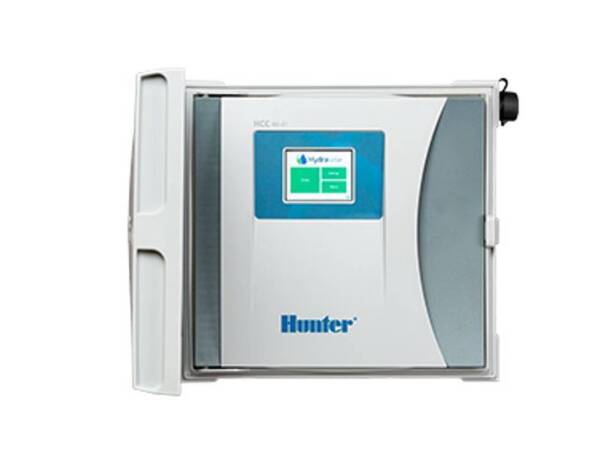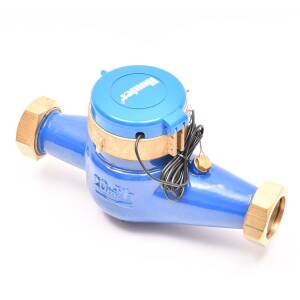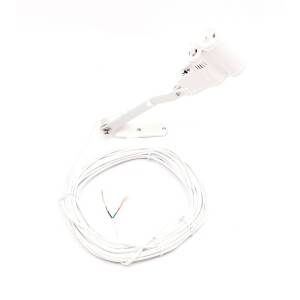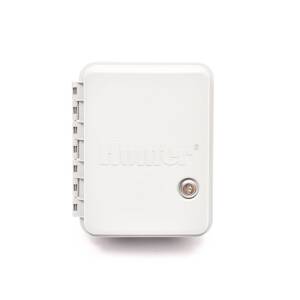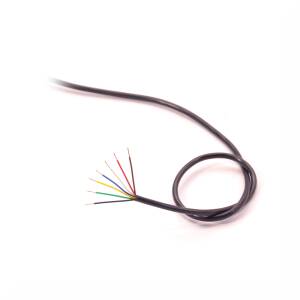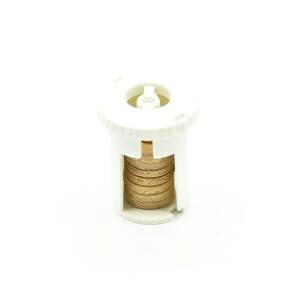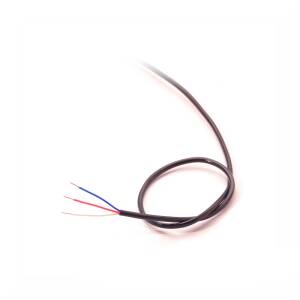Frequently Asked Questions (FAQs)
A watering controller is an electronic device that automatically regulates watering times and amounts in your garden. It controls the solenoid valves that open or close the water flow to the different watering zones. You can set individual schedules for different areas of your garden to ensure that each plant receives the optimal amount of water. This allows you to optimally control the water needs of your plants.
Sensors such as soil moisture and rain sensors significantly improve the efficiency of your irrigation system. A soil moisture sensor measures the moisture in the soil and prevents watering if the soil is already sufficiently wet. Rain sensors interrupt watering during precipitation to conserve water. Thanks to intelligent control, the amount of water is automatically adjusted according to demand. This ensures resource-efficient garden irrigation.
Modern irrigation controllers often offer Wi-Fi connectivity and can be connected to apps on your smartphone. This allows you to monitor and adjust your irrigation system from anywhere. For example, Hunter's Hydrawise technology enables remote control and adjustment of irrigation schedules based on real-time weather data.
Thanks to well-thought-out systems such as the Plug&Rain® modular system from DVS Beregnung, installing an automatic irrigation system is easy for DIYers. Many components are pre-assembled, which reduces installation effort and minimizes potential sources of error. With good planning and the right products, you can easily install your irrigation system yourself. Many products are available immediately, so you can get started right away.
By precisely controlling watering times and amounts, controllers ensure that only the required amount of water is used. Sensors complement this by taking into account environmental conditions such as soil moisture and precipitation and adjusting watering accordingly. This prevents both overwatering and underwatering and contributes to sustainable water use.
Yes, many existing irrigation systems can be retrofitted with sensors. It is important to check the compatibility between your current controller and the desired sensors. Manufacturers such as Hunter and Rain Bird offer a variety of sensors that are compatible with their controllers, allowing for easy integration. These products are often available immediately and in stock.
Choosing the right irrigation controller for your garden
Selecting the right irrigation controller and sensors is crucial to the efficiency of your garden irrigation. Start with a detailed analysis of your garden: what types of plants are there, and how do their water needs differ? Divide your garden into different irrigation zones to meet individual requirements. Take into account factors such as sunlight exposure, soil type and terrain inclination. Choose a controller that supports the number of zones you need and has sufficient programming options. A watering computer can help you to make your watering even more efficient. The price of the watering computer should also be taken into account to make an informed purchase decision.
Installation and operation: How to make garden watering a smooth success
Installing an automatic irrigation system requires careful planning and precise execution. Start by laying the main lines according to your irrigation plan. Use the Plug&Rain® modular system from DVS Beregnung, which offers pre-assembled components and makes installation easier. Install the solenoid valves at the designated locations, which will later be controlled by the controller. Connect the valves to the appropriate watering zones and connect them to the controller. Mount the sensors in suitable positions: rain sensors should be freely accessible to precipitation, while soil moisture sensors should be placed in the root zone of the plants. An additional filter can extend the lifespan of your system. If necessary, special irrigation computers can also be integrated to optimize control.
Test the system thoroughly to ensure that all components are working properly and that there are no leaks. During operation, it is important to monitor the system regularly and make adjustments as needed. Clean the sensors regularly and check the valves to make sure they are working properly. With well-planned control and the right sensors, you can optimize your garden irrigation and save water and time in the long term.
Intelligent watering for every season
The right watering schedule depends not only on the time of day, but also on the season. In spring and fall, your plants need less water than in the hot summer months. A watering computer allows you to flexibly adjust your watering times without having to constantly intervene manually.
- In spring, a little watering is enough, as the soil still stores moisture from the winter months.
- In summer, it is important to increase the watering duration, especially during hot spells.
- In fall, the amount of water can be gradually reduced to avoid waterlogging.
- In winter, the irrigation system should be emptied and made frost-proof to prevent damage to control units and pipes.
With an adapted control system, you not only save water, but also ensure that your plants are optimally cared for in every season.
Efficiently retrofitting irrigation systems
If you already have an irrigation system in your garden, you can make it even more efficient by using modern controllers and sensors. Many older systems can be easily retrofitted with smart irrigation controllers or additional sensors to use water more selectively.
- A rain sensor prevents unnecessary watering when it rains.
- A soil moisture sensor measures the moisture in the soil and ensures that watering only takes place when needed.
- A Wi-Fi-enabled controller allows you to control it remotely via an app, so you can adjust watering times at any time.
- An additional filter protects your system from contamination and extends the lifespan of the irrigation technology.
By retrofitting your irrigation system, you can increase efficiency, reduce water consumption and improve the health of your plants. At DVS Beregnung, you'll find readily available products that are easy to install and will optimize your irrigation system.
What is smart irrigation control?
A smart irrigation controller is a sophisticated device that automatically controls and optimizes the irrigation of plants and lawns. These systems use advanced sensors and algorithms to adjust watering based on current environmental conditions. This ensures that your plants always receive the right amount of water without the need for manual intervention. Smart irrigation controllers are particularly useful for reducing water consumption and promoting the health of your plants.
Definition and advantages of a smart irrigation controller
A smart irrigation controller is a computer-controlled system that automatically controls the irrigation of plants and lawns. These systems adjust watering based on current conditions such as temperature, humidity, and sunlight. The advantages of smart irrigation control are many:
- Optimized irrigation: Your plants and lawns stay healthy and vibrant.
- Water savings: Reduced water consumption and lower energy costs.
- Increased efficiency: Enhanced efficiency and productivity in your garden.
- Remote control: Option to control and monitor watering while on the go.
How does smart irrigation control work?
Smart irrigation control works by using various sensors and algorithms to control the watering of plants and lawns. Typical components include:
- Soil moisture sensors: Measure moisture in the soil and prevent overwatering.
- Temperature sensors: Detect the temperature in the garden and adjust watering accordingly.
- Sun sensors: Measure solar radiation and regulate the amount of water.
- Algorithms: Analyze the collected data and optimize watering schedules.
Categories of irrigation controllers
There are different categories of irrigation controllers that can be selected depending on your needs and requirements. The main categories are:
Automatic, manual and smart controllers.
- Automatic controllers: These controllers automatically regulate irrigation based on pre-programmed times and amounts. They are ideal for gardeners looking for a simple and reliable solution.
- Manual controllers: These controllers require manual input of times and amounts. They offer flexibility but require more attention and time.
- Smart controllers: These advanced controllers use sensors and algorithms to adjust watering based on current conditions. They offer the highest efficiency and are especially useful for environmentally conscious gardeners who want to minimize water use.
By choosing the right category of irrigation controller, you can ensure that your garden is optimally watered and your plants grow healthy and strong.
 Free Online Irrigation-Planner
Free Online Irrigation-Planner



